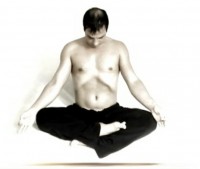Where Is the Obturator internus?
Where Is the Obturator internus?
![]()
What are the Symptoms of a Obturator internus Tear or strain?
Obturator internus muscle strains are extremely rare. Obturator internus muscle injury accompanies injuries of other gluteal muscles. An example being after posterior hip dislocation. Tenderness over the left ischial tuberosity and the deep gluteal muscles can be present. External rotation and extension at the hip can be painful deep inside the hip. Tenderness at the tenoosseous attachment of the right adductor longus to the medial right pubic bone.

Strain within the obturator internus (black arrows) and obturator externus (white arrows) muscles.
What is The Function of the Obturator internus?
Helps to stabilize the hip joint. The obturator internus along with 5 other muscles are categorized as the “deep six’ creating external rotation of the hip, flexion or extension, abduction and is an important stabilizer of the hip joint.
Its primary function is to help move the thigh away from the center of the body by rotating it in a sideways direction.
When the thigh is flexed, it assists other muscles in moving the thigh outward, away from the midline of the body.
![]()
Origin and Insertion of Obturator internus
![]()
Origin:
Partly from the inner surface of the obturator membrane that covers most of the obturator foramen. The obturator internus originates from the rami surrounding the obturator foramen and the quadrilateral plate and leaves the pelvis through the lesser sciatic notch before inserting on the greater trochanter of the proximal femur.
![]()
Insertion:
the middle of the bony surface of the greater trochanter of the femur
![]()


